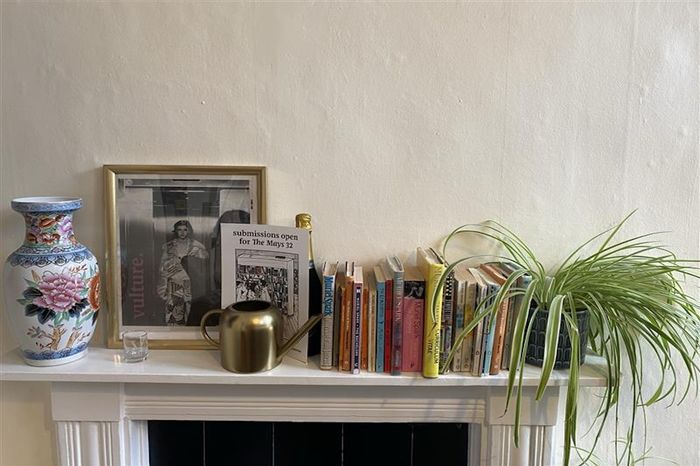A love letter to my dining table
Loveday Cookson reflects on her second-year room and how it has offered her what most other college accomodation doesn’t – community

From the cusp of the Edwardian period, my first-year accommodation boasted views of the city bus station, a pigeon that would regularly coo inside my fireplace, and the heaviest doors known to humanity. And yet, despite its quirks, my room was one of my great loves.
I failed to obtain the accommodation of my dreams for second year, instead settling happily for a new build saturated with my friends, grateful not to have to contend with the private rental market – even if I had to kiss my fireplace goodbye. Initially unfazed by the date of my room’s construction, second year rolled around and my hopeful new-build room turned out to be yellow. Not a mellow, sunshine yellow, the buttercup kind, but a Winnie the Pooh, Van Gogh sunflower yellow, the kind only at home in a mid-00s concrete tower, with the questionable orange curtains to match. The only saving grace: a kitchen table. My mornings no longer entail bustling into the kitchen, diving out of the way of other frantic students also late to their 9ams, but lazily rolling into the kitchen to find my friends making eggs while I sit and crunch down some cereal.
“The communal spaces: the library, hall, or JCR demand adherence to their narrow functions or are imbued with a level of formality”
This communal cereal consumption gave me some clarity about the hostility of college accommodation, especially new builds, forcing us into our rooms at every possible moment. They are glossy, aesthetic-focussed capsules rather than student-centred; far flung from our other community hubs, most second-year accommodation is a considerable commute to the main site (by Cambridge standards) further breaking down the ease of social spaces.
Cambridge, while brimming with accommodation compared to most other universities that depend on private rental markets, is almost devoid of communal spaces. Colleges pride themselves on community, but the sentiment is not often echoed in their new architectural choices or locations. The communal spaces – the library, hall, or JCR – demand adherence to their narrow functions or are imbued with a level of formality. New builds appear to be the perfect solution to this problem, and yet many are still left feeling empty of student consideration and lacking in any character other than the existence of en suites (which do not quite constitute personality). The modern builds are likened to hotels, the copy-and-paste units feeling clinical compared to the chipped paint and window seats of older buildings. While en suites are a sought-after luxury, and an imperative for many students, we also want common spaces and neutrally coloured walls to leave some room for our own expression and preferences.
“We want bedrooms with chairs for more than our desks and to be reminded that we aren’t just students, but people who would like to do something other than eat pasta by ourselves”
I can forgive the lack of community in 1920s accommodation, but to have new builds, still made without ovens, with rent almost unattainably high and little space for self-expression makes me wonder how important the experience of occupying these buildings is in the consideration of their architectural design. Student accommodation should be for the students, not the people who find habitation there for just the weekend conferences. We want bedrooms with chairs for more than our desks and to be reminded that we aren’t just students, but people who would like to do something other than eat pasta by ourselves. There are definitely some unexpected delights to these weird modern setups: floor picnics have become a staple of my social life, with many giddy nights spent eating pizza squished together, impaled by a rogue elbow as we ultimately descend into post-feast giggles. Yet some of the best moments of my second year have been built around our tiny dining table – Galentine’s day dinner, pancake day feasts and my friends entertaining me as I cook, able to do more than perch on a sideboard.
I still shuffle into my morning lectures only moments before the beginning, but it’s the mark of time spent having breakfast with friends rather than weaving my way through the hostility often bred into our accommodation. My room is yellow, and as much as I may curse the interior designer, the kitchen just large enough to accommodate a dining table has proven to me that new build accommodation is not the antithesis of ‘the Cambridge experience’. It can facilitate something greater than the fantasy, broadening access while also providing some much-needed community – but only when done correctly, with student wants and needs at the centre.
 News / Eight Cambridge researchers awarded €17m in ERC research grants27 December 2025
News / Eight Cambridge researchers awarded €17m in ERC research grants27 December 2025 News / Downing investigates ‘mysterious’ underground burial vault 29 December 2025
News / Downing investigates ‘mysterious’ underground burial vault 29 December 2025 Lifestyle / Ask Auntie Alice29 December 2025
Lifestyle / Ask Auntie Alice29 December 2025 Sport / Hard work, heartbreak and hope: international gymnast Maddie Marshall’s journey 29 December 2025
Sport / Hard work, heartbreak and hope: international gymnast Maddie Marshall’s journey 29 December 2025 News / News in Brief: carols, card games, and canine calamities28 December 2025
News / News in Brief: carols, card games, and canine calamities28 December 2025







